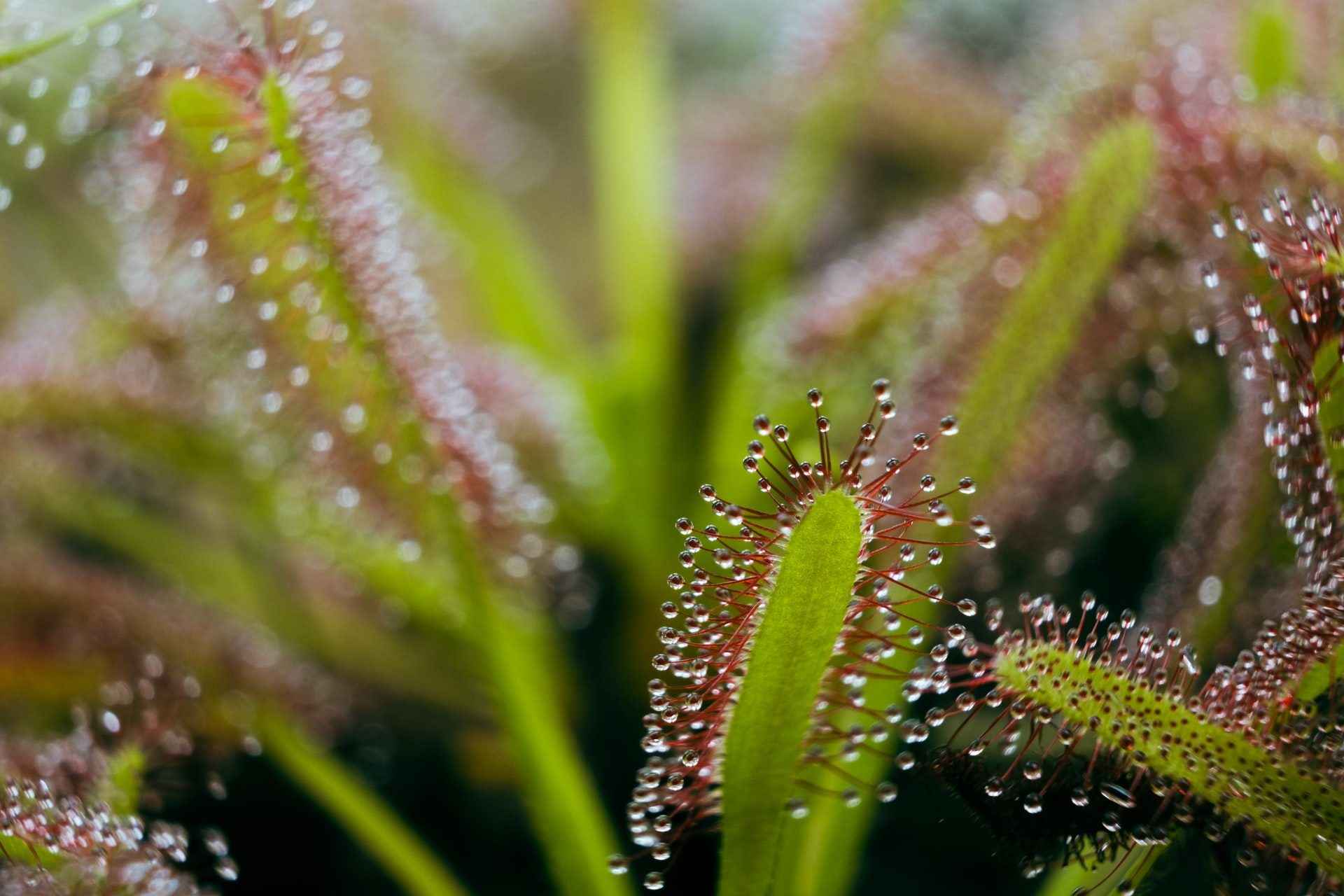Using Sundews in the Lab
ResourceThese delicate-seeming plants are highly adapted for life in the unforgiving peat bogs, capturing and preying upon insects to make up for the lack of nutrients in the soil. One of the SAPS ‘Star Plants’ for your lab, showing an extreme form of adaptation to get your students thinking. Follow our care tips below to ensure that the plants flourish in your lab.
Practicals
- Adaptation – an excellent plant for teaching adaptation to nitrogen-poor habitats. It makes a good comparison with Lithops, which is highly adapted to dry environments.
- For further teaching ideas go to Using Carnivorous Plants in the Classroom
- Video: watch sundews catching their prey in this video
Teaching Topics
- Interdependence
- Adaptation
Image Resources
Description
Cape Sundew, Drosera capensis
A sticky-trapped carnivorous plant with long spatula-shaped leaves originally from South Africa. These plants have adapted to soils with high moisture and low nitrogen levels by attracting, capturing and digesting insects.
Sundews have sticky traps, with ‘tentacles’ (trichomes) with glandular heads. These heads contain glandular cells that produce a sticky mucilage. The mucilage is an acidic (pH 5) polysaccharide solution, which also contains calcium, magnesium, potassium and sodium ions.
Prey, mainly winged insects, are attracted to the reflection of light in the ‘dewdrops’ of mucilage, and to the conspicuous reddish ‘tentacles’.
Once on the leaf, the prey animals get stuck to the mucilage drops. As they struggle to escape, they become even more covered in the mucilage. The struggle stimulates the tentacles around the victim to bend inwards, causing the leaf to curl, and trapping the insect further. The prey animal is eventually so covered in mucilage that it suffocates.
This is not just a passive process. The struggle by the victim is actually detected by the plant. Action potentials are generated that move from the tentacles to the leaf surface. This causes curling in the stimulated tentacle. The tentacle movement lasts up to 30 minutes. In addition, chemical stimuli in other tentacles can also occur, causing more leaves to curl, and completely enveloping the prey animal.
Digestive enzymes are released from glands into the mucilage surrounding the prey animal, and the soft parts are digested very quickly. Indeed, Darwin found that Dorsera rotunidfolia was able to break down a 1.25cm cube of egg white completely after 50 hours. The nutrients are resorbed by the plant’s tentacle knobs and the sessile glands.
Britain and Ireland have a wide range of carnivorous plants, and the National Biodiversity Network Gateway has some excellent data files on the distribution of some of our native Droseras.
Growing and sourcing
Adapted to: Soils with high moisture and low nitrogen levels
Obtaining: South West Carnivorous Plants are an excellent UK supplier and familiar with teachers’ needs
and will provide a starter kit of 3 carnivorous plants with different trapping mechanisms for a reasonable price.
Propagating: Drosera can easily be grown from seed, and mature plants readily set seed.Sprinkle fresh seed on the surface of the compost. Keep in the same conditions as the parent plant – direct sunlight and a minimum temperature of 8 degrees C. Germination may occur as quickly as three weeks after sowing.
Compost: Carnivorous plants grow on peat, and this is often recommended for use, despite its environmental issues. The Carnivorous Plant Society suggests that ‘Moorland Gold’, available from online suppliers, mixed with perlite (in the approximate ratio 3 Moorland Gold to 2 perlite) is a suitable sustainable alternative.
Light: Full sun. Grow on a sunny windowsill.
Water: Keep the pot sitting in a tray of rainwater. Never use tapwater. If you don’t have an easy supply of rainwater, distilled water or de-ionised water will suffice.
Temperature: In summer, plants can be kept indoors or outdoors. In winter, temperatures of 10-15 degrees C are preferable (e.g. a glass porch).
Feeding: Do not add fertilisers. Your sundew will feed itself.
Note: Excessive handling of leaves reduces viscosity and ability to trap.
